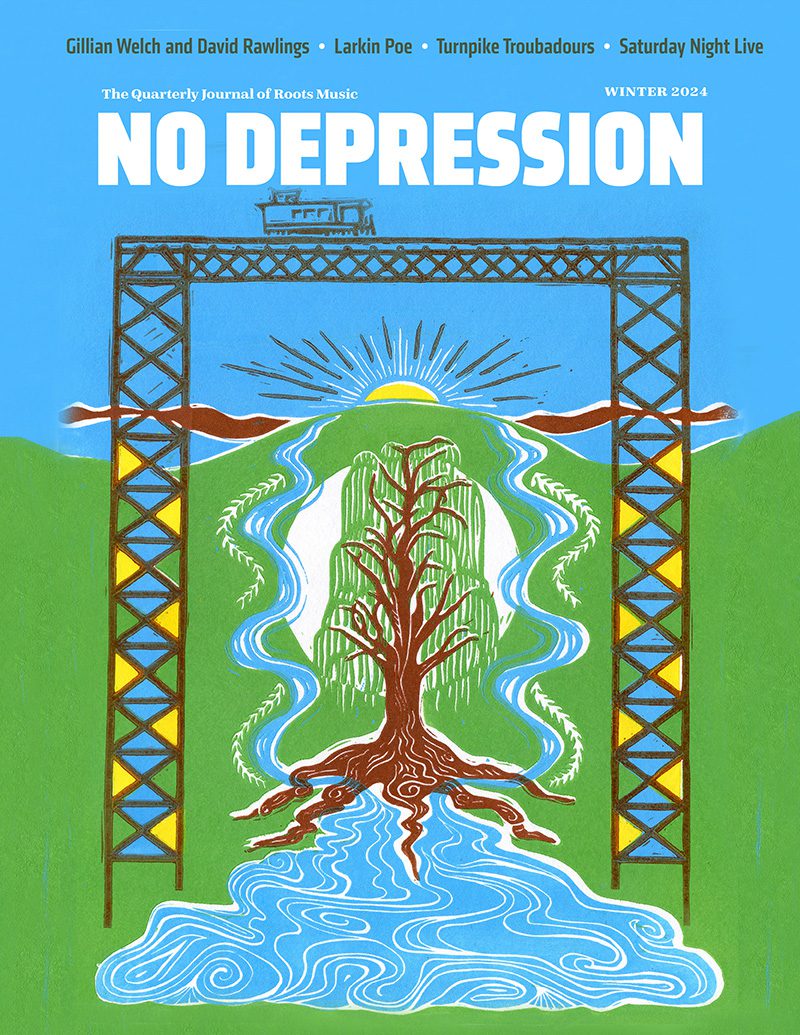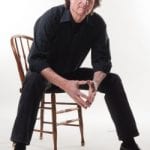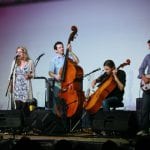Alasdair Fraser and Natalie Haas – Why wasn’t I told?
Blue Mountains Music Festival
Katoomba, NSW, Australia
Friday 15th – Sunday 17th, March 2013
By my quick calculation, I’ve been at music festivals for about 90 days in the past 15 years. And I enjoyed every one of those days, even the real muddy ones.
To be frank, I’m flat out recalling some acts I’ve seen. Many names in small letters on the faded T-shirts don’t even nudge my recognition meter. On the other hand, there are many, many indelible memories.
Then there are the handful of performers who were so moving, so perfect, that it felt like … I don’t know, like an unexpected gift, out of kilter with the informal festival surroundings. It’s like the world is a little out of balance, and things have been tipped in your favor.
So it was with Alasdair Fraser and Natalie Haas.
I knew very little about this duo, but minutes into their Friday night set it was obvious they were something very special. There is an indefinable quality that makes a great duo – an ability to read and complete each other’s musical thoughts, as well as virtuosity and sensitivity to the material. You see it most often in jazz and Haas has, to quote Sunday’s memorable stage intro, a “jazz heart”.
Fraser and Haas seamlessly swap roles, moving back and forth from melody to rhythm, harmonising, feeding off each others lines. Mostly it is Fraser laying the melody, and Haas providing the rhythmic propulsion; bowing, plucking like a jazz bassist, even strumming chords.
He’s in his 50s, she in her 20s. They were so together, so perfectly matched, there had to be a back story. There is.
Alasdair Fraser moved from his native Scotland to California more than 30 years ago, and established the Valley of the Moon fiddle camp in 1984. Natalie attended the fiddle camp at age 11, and was performing with Fraser by her mid-teens. They made their first album together in 2004.
Although cello may be unusual in folk music, Fraser explains that violin and cello were the Scottish “dance band of choice” through to the close of the 19th century, so they have taken something old and made it new.
Friday night’s show was so inspiring I went back for Saturday night, and it was just as good. Their final set was at midday Sunday, on a bigger stage with better PA, but it clashed with my only chance to see Canadian cellist Zoe Keating. Would three times be too much? Haas came to the stage looking very casually dressed, without Saturday’s immaculate makeup, cup of tea in hand. Fraser seemed a little bleary eyed. It looked like Saturday night was a long one.
Then they played, and their third set was the best of the three. Even a broken violin string during their final medley was turned to advantage, with Haas given a chance to solo on ‘Josefin’s Waltz’ before Fraser rejoined her to put the tune to bed, and take up the medley where they left off. It was totally exhilarating stuff.
(When did cello become a thing? I don’t think I saw this wonderful instrument outside of classical music for 30 years or more, but recently there have been Tristan Clarridge – and before him Rushad Eggleston – in Crooked Still, John Hagen in Lyle Lovett’s band, and soloist Ben Solee, as well as Haas and Keating. And many others, I guess. Two of my friends saw Zoe Keating, and said she was outstanding.)
American visitors provided most of the highlights of this festival for me.
I saw Arlo Guthrie about ten years ago – the whole of ‘Alice’s Restaurant’ included – and it was a good trip down memory lane. Ten years on, I wasn’t expecting too much, but Arlo was in sparkling form. Saturday evening’s show was largely a tribute to Woody – ‘Deportee’, ‘Tom Joad’, ‘This Land’, ‘Do Re Mi’, and several more, although he did sing ‘Coming Into Los Angele’s for the committed Arlo fans. His singing and playing, including some credible ragtime piano, were better than I remembered. Of course, Arlo’s always had the gift of the gab.
Sunday afternoon’s show was more of a treat for those who made the trip for Arlo, and included Steve Goodman’s ‘City of New Orleans’ and ‘The Motorcycle Song’.
Red Molly were a revelation. Named for a character from a Richard Thompson song, this north-eastern trio was formed at a folk festival in 2004. The current lineup is Laurie MacAllister (vocals, guitar, bass), Abbie Gardner (vocals, Dobro), and newest member Molly Venter (vocals, guitar).
Although sprinkled with originals, more than half their set is material by others and each is a perfect fit, including songs by Hank Williams, Dolly Parton, Robert Johnson, Gillian Welch and David Rawlings, and the underrated Mark Erelli. (They got through most of the excellent Light in the Sky, their only CD with Venter in the group.)
Red Molly provided a textbook lesson in crafting a performance, allowing plenty of light and shade, friendly and engaging but never stalling the show, and highlighting the talents of all three members.
Their a capella version of ‘Dear Someone’ almost wrests the song from Gillian Welch, Gardner singing the high part with a voice that sounds more Smoky Mountains than Jersey City.
Gardner takes the lead on the trio’s best original song, the swinging ‘Hello Goodbye’, written with her dad, Herb.
Fever, with just finger snaps and MacAllister’s bass for accompaniment, is an ideal vehicle for Venter.
Laurie McAllister shone on ‘Ghost’, one of two Mark Erelli songs covered on Light in the Sky. (And she deserves a shout for her perfect pronunciation of Yackandandah, an Aboriginal place name many Aussies might struggle with.)
Chris Smither is a perennial favorite on Australia’s festival circuit, and I’ve seen him more times than I can count. At 68, he shows no signs of slowing up, and he had new material to play from last year’s excellent Hundred Dollar Valentine. (I don’t know what impresses me more, amazing young prodigies like Sarah Jarosz or guys like Smither who can keep going back to the well again and again.)
Of the locals, Joseph Tawadros is the one I came to see. Born in Cairo in 1983 and raised in Australia, Tawadros is recognised as a leading exponent of the oud, and has just released Chameleons of the White Shadow, a world-jazz fusion album with an amazing lineup – Bela Fleck, Ghanaian bassist Richard Bonna, organist Joey de Francesco, and Joseph’s brother James on req (Egyptian tambourine). Here, he was in a trio with James and outstanding electric bassist Steve Hunter.
In the event, neither of his sets really took off for me. It was a combination of things. At both stages the oud sounded a little thin through the PA, particularly against the rich sound of Butler’s bass. Tawadros also needed to tune up after each piece, and his patter – a well worn brand of self-deprecating ethnic humour, tends to fall flat at times. That said, I enjoyed him immensely last time he was at this festival, with Band of Brothers, and look forward to seeing him – and James – again.
For once, the weather gods smiled on Katoomba. Friday night was cool and misty, but the weekend weather was glorious.
My gang – one of whom travels 700 miles from Hobart, Tasmania each year – all agreed it was not the best Blue Mountains Festival, not surprising given the high standards of the previous two years, but it was mighty good fun.
We’ll all be back next year for Festival #18.




